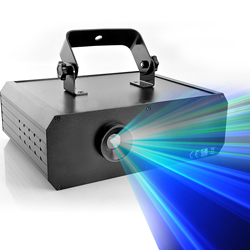
Ideally, images shot by a video camera would be reproduced on a display device exactly as it was recorded.
Unfortunately, this is very rarely the case, as the technologies of cameras and display devices sometimes have their own nuances that slightly, and sometimes significantly, change the performance of imagery. In such cases, you need tools to correct for these abnormalities.
What is Gamma?
Gamma is a function to correct nonlinear performance inherent in CRT display devices. The CRT does not perform in a linear fashion against voltage; therefore, it might display an image not exactly as it was intended.
Voltage is the medium in which the CRT is fed the video signal. Another way to look at it is the relationship of video signal input to the CRT versus light out is not linear.
To compensate for this, a gamma “curve” is applied to the signal at the video camera during recording. This curve is defined based on the known inherent performance of a CRT. When the signal is applied to the CRT, it is already corrected for the nonlinear performance; hence, it correctly outputs the images recorded by the camera.
With devices offering a natural linear function, the gamma correction needs to be removed (“degamma”).
What gamma do I need in my application?
Since all display devices are well documented concerning their performance characteristics, we know what gamma corrections are normally applied to a signal that was intended for use with such a device. Until recently, CRT has been the dominant display technology of display devices.
Signal types such as NTSC and PAL have gamma curves based on CRT displays. Film, on the other hand, has a gamma that is based on celluloid reproduction and film-to-video transfer. NTSC, the video standard adhered to in the U.S., has a gamma of 2.2.
Gammas also are determined based on the conditions of the environment that the display device may be used, such as a dark room (cinema, home theater), a well-lit room (conference room, sanctuary) or outdoor environment. To account for a host of conditions, gammas are created for low-light, or bright-light situations. A film-based video source in a controlled theater environment with very low lighting might use a gamma known as Film Low.
Other gammas have occurred based on nothing other than an artistic approach to the reproduction of an image. Sometimes, people just like to see images in a certain way.
Summary
Although gamma correction was born to fill the need of correcting nonlinear performance of video recording and display devices, it has also become a subjective tool for those who want a certain look, or just like the effect of one gamma curve over another. It is your choice to be objective and use the gamma, or degamma function that is intended for a certain signal type and display device, or you can be artistic and pick something you find pleasing.
Different gamma curves may appeal to you for different environmental lighting conditions as well. Understand the foundation of gamma, but use as you see fit.
This article provided by Digital Projection.
